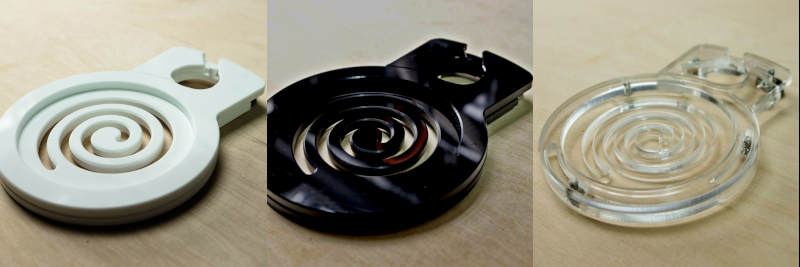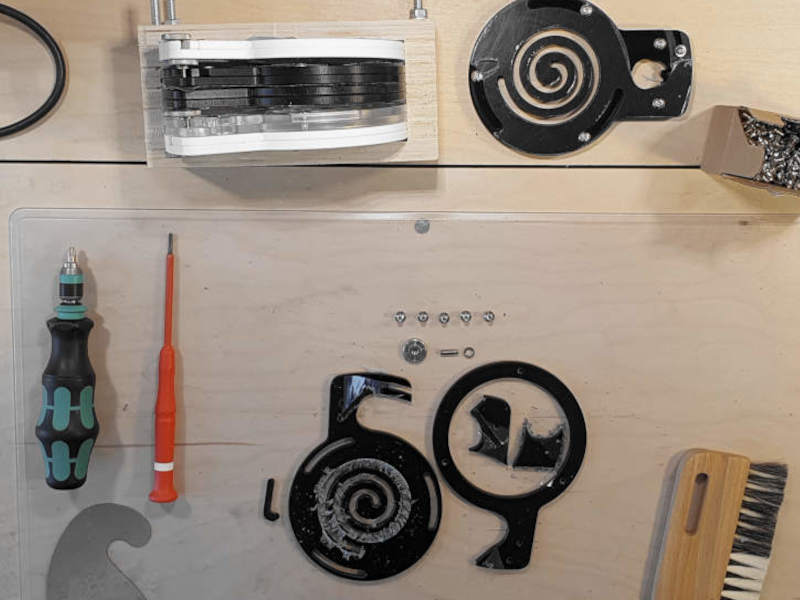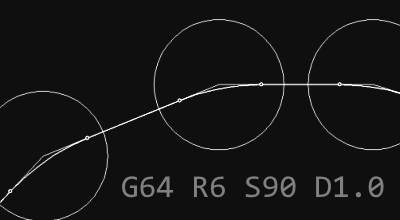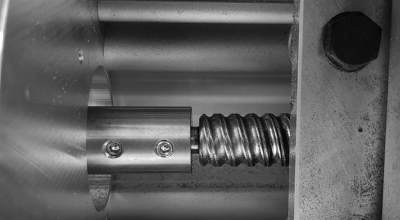Seifenbutler - Pilot run!
My Hardware project Seifenbutler is complete. After more than a year of development, I have manufactured some in white, black, transparent, and white translucent. They even made it to a first online shop.

How do I determine the sales price?
As I use high-quality materials and the production and assembly time is long, I don’t have much room for maneuver when it comes to pricing. On the other hand, I can’t ask moon prices for a commodity like Seifenbutler - unless I use precious woods or other unusual or complex materials. There is a lot of material online for such calculations. I used a YouTube video from the “Cutting It Close” channel as a guide.
My price calculation is made up of the following items:
Final price = material price
+ machine time (investment, wear, tools, consumables)
+ production and assembly time
+ packaging costs
+ fees (postage, payment service providers, stores)
As you can see, I have not included my own time for product development in the calculation - if I had to do this, it would easily add the equivalent of 250h of working time.
Material prices
As of the end of 2023
Ok, let’s quickly list the expenses per part:
| quantity | item | price/unit | unit used | price |
|---|---|---|---|---|
| 2 | PMMA 5mm XT | 90€/m² | 0,03 | 2,70€ |
| 1 | Knurl M4 A2 22mm | 7,54€/25pcs | 0,04 | 0,30€ |
| 1 | Washer M4 A2 12mm | 0,94€/100pcs | 0,01 | 0,01€ |
| 1 | pin M4 A2 12mm | 6,70€/50pcs | 0,02 | 0,13€ |
| 5 | screw M4 A2 8mm | 12,40€/200pcs | 0,025 | 0,31€ |
| Material cost/part | 3,45€ |
Machine time
I estimate the machine time for this project at 100€/h. The lion’s share of this is the investment, maintenance and wear costs of the machine at €50/h plus my own working time, which I simply estimate at €30/h.
The tool costs are quite high at around €15/h, as I have to use four different tools, all of which are small in diameter and therefore subject to high wear.
Consumables are vacuum fleeces, positioning pins, cut protection gloves and adhesive tape. I need the latter to fix the small milled parts and the spiral. Their share of the machine time costs is around 5€/h.
The machine time is currently 8min/part. This means that the item machine time amounts to 13.30€/piece.
Assembly time
It takes me about 5 minutes to assemble a soap holder. If I apply an hourly rate of 30€, I arrive at 2.50€ per item.

Packaging costs and purchase of materials
I pack the soap holders in simple DIN A6 envelopes after wrapping them carefully in wrapping paper. The costs here amount to just 0.20€ per item. However, if I now include my working time for packaging and shipping labels, we are already at 0.90€ per item. Added to this are the costs for postage when purchasing materials and the costs for paper and printing the operating instructions, which I calculate at a further 0.50€/unit - the small quantities produced are weighing heavy on this.
Fees
Fees are incurred for shipping and payment service providers, for example. Here the prices vary depending on the provider, so I plan a shipping surcharge of 3.50€ (shipping by large letter) - this does not apply to sales “at the counter”.
The total price
If I add up all the items, I would have to call up a store price of 20.15€ (cash) for the unpacked goods and 24.75€ in the case of shipping with cashless payment. And then the company would still not have made a cent of profit.
I’m not sure whether the soap butler can be sold for such prices. But if you’re honest and don’t want to end up paying more, such calculations are unavoidable, at least roughly.
The assumed merchant with a store
If I were a merchant1, I would still have to add VAT and would also want to see the development costs amortized somehow. I’m also not sure whether I would get through the door “as a merchant” with an hourly rate of 30€.
Phew. If you now include things like store rent, costs for storage space, workshop rent, electricity, waste disposal, membership of the “Green Dot” in accordance with the Packaging Act, contributions to the Chamber of Industry and Commerce, the employers’ liability insurance association as well as taxes and duties, then even with a further 20% mark-up, a whole heap of soap holders would have to be sold in order not to end up poorer than before!
Let’s assume I can rent a workshop and open a tiny store.
A fictitious store
Let’s do a quick calculation with a few assumed values.
| Item | Price/Unit | Used | Final price |
|---|---|---|---|
| Shop | 16€/m² per month | 40m² | 640€ |
| Storage space | 4€/m² per month | 8m² | 32€ |
| workshop | 8€/m² per month | 30m² | 240€ |
| Service charges | per month | 1 | 200€ |
| Taxes | IHK / BG / insurance | 1 | 125€ |
| Fees | 20€/month | 3 | 60€ |
| Total | 1297€ | ||
| Staff | 1600€ |
And if I were to hire someone to work in this store for 20hours/week, I would incur an estimated €1600 in costs.
Summa summarum
Ok, let’s summarize: I start with a mark-up of 20% on the production costs. As an assumed merchant, however, I would have to pay VAT, which I would have to add on again.
Retail price = production price
+ contribution margin (20%)
+ value added tax (19%)
= (1,2 * 20,15€) * 1,19 = 28,77€
Oh well, that puts us at almost thirty euros per item.
So how many soap butlers have to be sold per month before I would make a profit as a merchant with a store?
The contribution margin is 4.03€ (20% of the production price). If I now divide the costs generated by production and sales by this amount, I get my minimum sales quantity: 719 units/month.
So how many hours per week would I have to spend at least at my CNC milling machine or assembling and packaging soap butlers?
If I take the values from above, I get a total of 8 + 5 + 2 = 15min/part.
With the minimum sales volume, that would give me a working week of about 45 hours!
Oh, 60 hours a week is easy, isn’t it? So I could produce 960 units per month - and assuming they sell excellently, I would earn an extra €971 to amortize the development costs (estimate 250h*€30 = €7,500). That’s a bang!
I would then march into the profit zone with the company after just eight months (with 60 hours per week, of course). Oh, or do you still have to pay taxes? And when was my machine paid off?
Conclusion on profitability
I realize that the calculation is not that simple. Some parameters cannot be scaled up or down arbitrarily and linearly and I cannot realistically estimate the machine costs, for example, because I simply don’t have any experience in continuous operation - keyword wear and tear.
Nevertheless, the amount of work I have to do is enough for me to say:
It won’t work. Nice project, but not worth it, at least not with my own funds and on my own initiative. It remains a pilot series and my joy at a successful, functional product.
Fortunately, this is all “just my hobby”, so I’m not forced to draw the disastrous conclusions 😉
-
Careful. My vocation is not to be a trader or a businessman, but to be an engineer. That’s why I only have a very rudimentary knowledge of business administration (just that one semester at university when nobody really wanted to listen). All my comments here are rough estimates. They should therefore be taken with a grain of salt. However, I am very happy to receive corrections and constructive criticism! ↩



